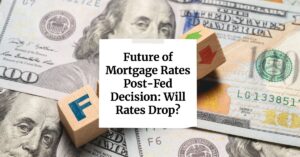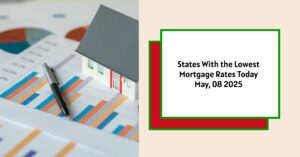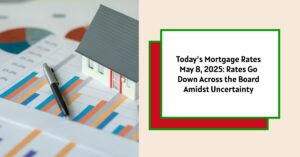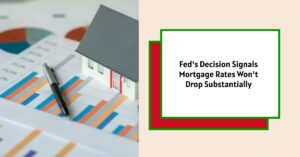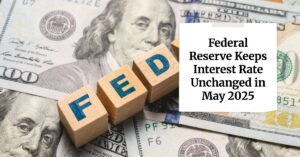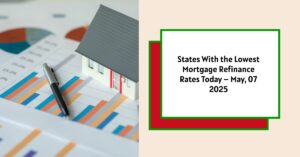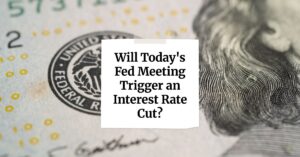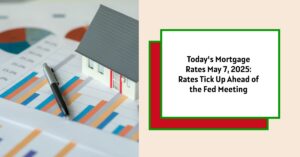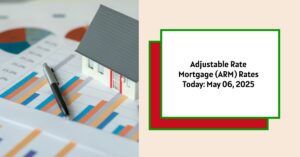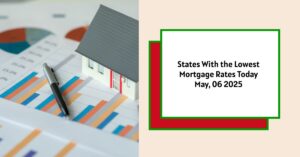If you're like many folks dreaming of buying a home or perhaps refinancing your current one, the big question on your mind is likely: Will mortgage rates rise again after the Fed's decision to not cut rates? The short answer, based on the current economic climate and the Federal Reserve's recent stance, is that a significant drop in mortgage rates in the near future looks unlikely, and there's certainly a possibility they could inch upwards or at least remain stubbornly steady.
I know it can be frustrating. We all remember those days not too long ago when mortgage rates were surprisingly low, dipping below 3% for a 30-year fixed loan during the pandemic. Now, seeing rates hovering around the high sixes or even touching 7% can feel like a punch to the gut. Trust me, I understand. It impacts affordability significantly and puts a damper on those homeownership dreams for many.
So, let's dive deeper into what's happening and what we can realistically expect.
Future of Mortgage Rates Post-Fed Decision: Will Rates Drop?
Understanding the Fed's Role and Its Impact on Mortgage Rates
The Federal Reserve, often just called the Fed, plays a crucial role in shaping the economic environment, and while it doesn't directly set mortgage rates, its actions have a significant influence. The Fed's primary tool is the federal funds rate, which is the rate at which banks lend reserves to each other overnight.
When the Fed decides to keep this rate steady, as they recently did, it signals their concern about ongoing inflation and the strength of the economy. Think of it like this: if the economy is running too hot, with prices rising quickly, the Fed might raise the federal funds rate to cool things down. Conversely, if the economy needs a boost, they might lower it to encourage borrowing and spending.
Now, here's the connection to mortgages: while the federal funds rate is a short-term rate, mortgage rates, especially for long-term fixed loans like the popular 30-year, tend to follow the trends of the 10-year Treasury yield. Investors in these long-term bonds want to see a return that accounts for inflation and the overall economic outlook.
When the Fed signals it's going to keep interest rates higher for longer to combat inflation, it often leads to higher yields on the 10-year Treasury, and consequently, higher mortgage rates. It's not a perfect one-to-one relationship, but the correlation is strong.
Why a Significant Drop in Mortgage Rates Seems Unlikely in the Near Term
Based on the latest economic data and the Fed's cautious approach, I don't foresee a major drop in mortgage rates happening anytime soon. Here's why:
- Persistent Inflation: The Fed has made it clear that their priority is to bring inflation under control. Until they see convincing evidence that inflation is consistently moving towards their target, they are unlikely to cut rates. And if inflation remains sticky, there's even a risk of further rate hikes, which could push mortgage rates higher.
- Strong Labor Market: A robust job market, while generally positive, can also contribute to inflationary pressures. People with jobs tend to spend more, which can keep demand high and prices elevated. The Fed is closely watching employment figures.
- Geopolitical Uncertainty: Events happening around the world, like trade tensions or political instability, can also impact financial markets and indirectly influence mortgage rates. Tariffs, for example, as mentioned in the provided data, could increase the cost of building materials, potentially affecting home prices and the overall economic outlook.
- Steady 10-Year Treasury Yields: As of recent data, the 10-year Treasury yield has remained relatively stable. Unless we see a significant and sustained drop in this benchmark yield, a corresponding large decrease in mortgage rates is improbable.
Could Mortgage Rates Still Go Up?
While a sharp decrease seems unlikely, the possibility of mortgage rates rising again shouldn't be dismissed. Several factors could contribute to this:
- Resurgence of Inflation: If inflation proves more stubborn than anticipated and starts to climb again, the Fed might be forced to take more aggressive action, potentially leading to higher Treasury yields and, consequently, higher mortgage rates.
- Stronger-than-Expected Economic Growth: While seemingly positive, unexpectedly strong economic growth could also fuel inflation fears, prompting the Fed to maintain or even increase rates.
- Increased Federal Borrowing: A significant increase in government borrowing could also put upward pressure on Treasury yields, indirectly impacting mortgage rates.
What This Means for Homebuyers and Homeowners
If you're in the market to buy a home, the current situation requires a shift in mindset. Waiting for a significant drop in mortgage rates might mean putting your plans on hold indefinitely and potentially missing out on opportunities as home prices could continue to appreciate, even if at a slower pace.
Here are some strategies to consider in today's market:
- Focus on Affordability: Instead of solely focusing on interest rates, concentrate on finding a home that fits your budget, considering all costs, including property taxes, insurance, and potential maintenance.
- Explore Different Loan Options: Look into various mortgage products, such as Adjustable-Rate Mortgages (ARMs), although be cautious about the potential for rates to rise later. Consider shorter-term fixed-rate loans like a 15-year mortgage, which often come with lower interest rates but higher monthly payments.
- Consider a “Fixer-Upper”: As the provided data suggests, a home needing some renovations might be more affordable. Explore loan options like the FHA 203(k) that can help finance both the purchase and the improvements.
- Be Open to Location: Expanding your search to different neighborhoods or even suburban areas might reveal more affordable options. Consider the trade-offs, such as commute times, against the potential savings.
- Explore Rate Buydowns: If you have some cash available upfront, a rate buydown could temporarily or permanently lower your interest rate.
- Shop Around for Lenders: Don't just go with the first lender you talk to. Compare rates and fees from multiple lenders to ensure you're getting the best possible deal.
For current homeowners, if you have an adjustable-rate mortgage, now might be a good time to assess your risk and consider refinancing into a fixed-rate loan if you're concerned about potential rate increases. However, carefully weigh the costs of refinancing against the potential benefits.
Read More:
Fed's Decision Signals Mortgage Rates Won't Go Down Significantly
When Will the Soaring Mortgage Rates Finally Go Down in 2025?
The Bottom Line: Navigating the Uncertainty
Predicting the future of mortgage rates with absolute certainty is impossible. The economic landscape is constantly evolving, influenced by a multitude of factors. However, based on the Federal Reserve's current stance and the prevailing economic data, it seems prudent to anticipate that mortgage rates are likely to remain at their current levels or potentially edge higher in the near future rather than experiencing a significant decline.
My advice is to focus on what you can control: your financial situation, your budget, and your home buying or refinancing strategy. Don't let the uncertainty paralyze you. Educate yourself, explore your options, and make informed decisions that align with your long-term financial goals. The dream of homeownership is still achievable; it just might require a more strategic and adaptable approach in today's market.
Turnkey Real Estate Investment With Norada
Investing in real estate can help you secure consistent returns with fluctuating mortgage rates.
Despite softer demand, smart investors are locking in properties now while competition is lower and rental returns remain strong.
HOT NEW LISTINGS JUST ADDED!
Speak with an investment counselor (No Obligation):
(800) 611-3060
Also Read:
- Will Mortgage Rates Go Down in 2025: Morgan Stanley's Forecast
- Expect High Mortgage Rates Until 2026: Fannie Mae's 2-Year Forecast
- Mortgage Rate Predictions 2025 from 4 Leading Housing Experts
- Mortgage Rates Forecast for the Next 3 Years: 2025 to 2027
- 30-Year Mortgage Rate Forecast for the Next 5 Years
- 15-Year Mortgage Rate Forecast for the Next 5 Years
- Why Are Mortgage Rates Going Up in 2025: Will Rates Drop?
- Why Are Mortgage Rates So High and Predictions for 2025
- Will Mortgage Rates Ever Be 3% Again in the Future?
- Mortgage Rates Predictions for Next 2 Years
- Mortgage Rate Predictions for Next 5 Years
- Mortgage Rate Predictions: Why 2% and 3% Rates are Out of Reach
- How Lower Mortgage Rates Can Save You Thousands?
- How to Get a Low Mortgage Interest Rate?
- Will Mortgage Rates Ever Be 4% Again?
